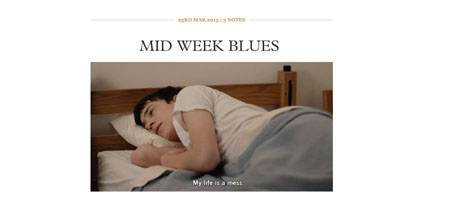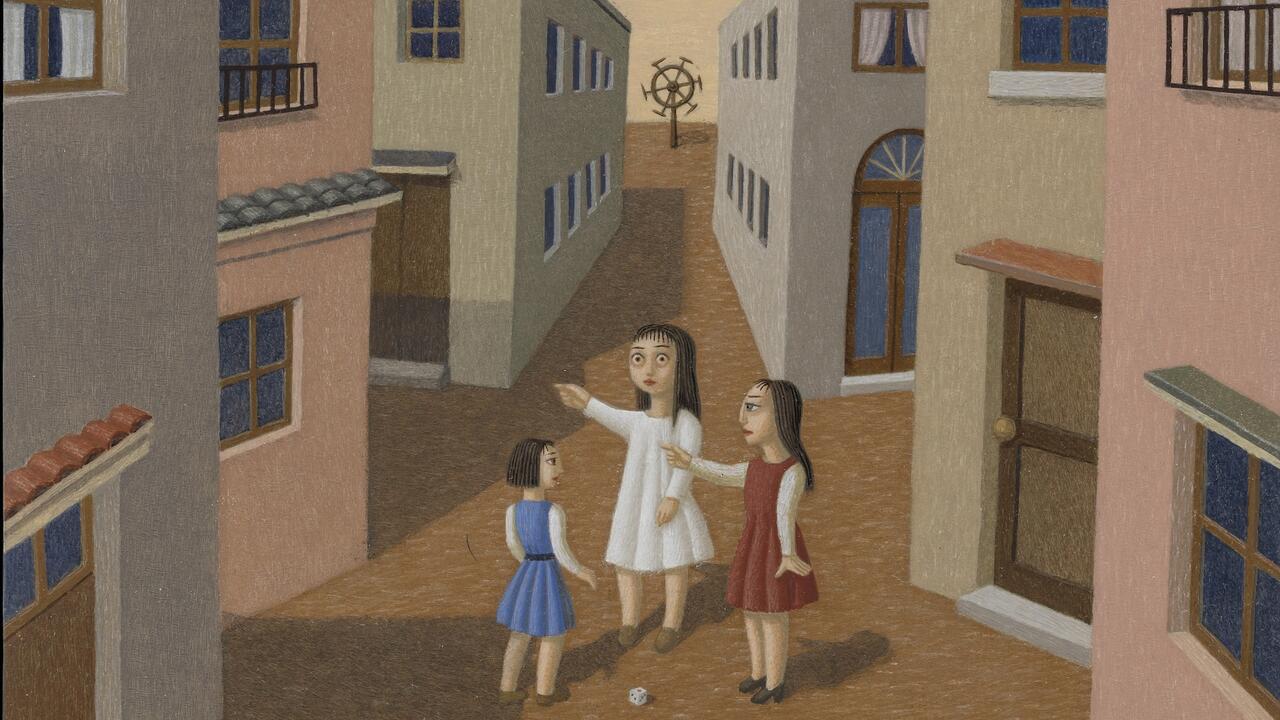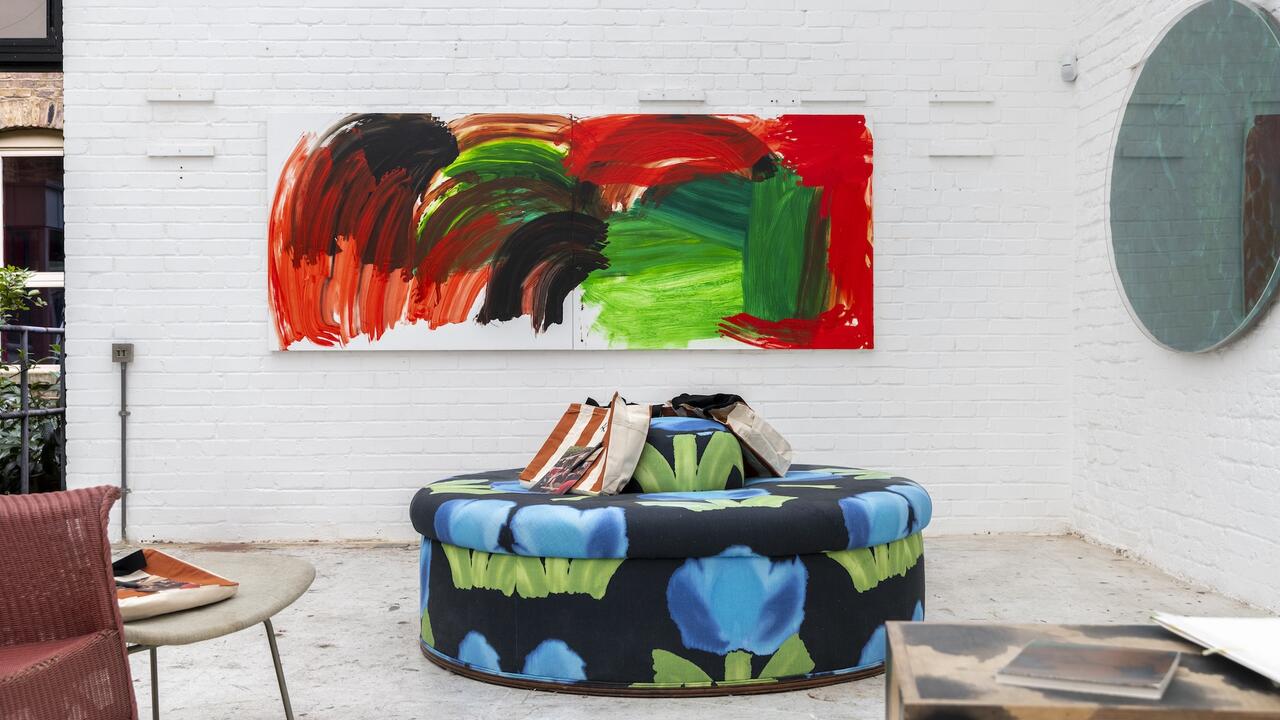Loop the Loop
A brief history of the GIF
A brief history of the GIF

If an annual award for the ‘hottest digital image format online’ existed, this year’s winner would be the Graphics Interchange Format or gif: an eight-bit, 256-colour bitmap picture file that can composite a series of stills into an infinitely loopable, silent moving image. Two factors have contributed to its popularity: pragmatically, the GIF is a quick-to-load file supported by every web browser; and, in terms of visual pleasure, the GIF can combine the ‘decisive moment’ economy of a JPEG with the irresistible affectivity of moving image.
The GIF’s pop-cultural tipping point came in 2012. Oxford Dictionaries usa pronounced ‘GIF’ their word of the year; the Photographers’ Gallery in London organized ‘Born in 1987: The Animated GIF’; and, amongst other mainstream media activity, Tumblr and the Guardian teamed up to ‘live-GIF’ the us presidential debates. Artists and cultural commentators had, however, been critically exploring the GIF since the early 2000s. Pioneering net artist Olia Lialina’s classic piece ‘A Vernacular Web’ (2005) is the prototypical text on the subject, while writer Giampaolo Bianconi’s essay ‘Gifability’ (2012) offers an astute account of the format’s contemporary status. Both trace the dichotomies that have structured all analyses of the medium from a cultural perspective: the tensions between consumers and producers, originality and nostalgia, authorship and appropriation, the professional artist and the amateur.
Created in 1987 by the digital communications company CompuServe, the GIF was originally designed for speedy transfer across pre-World Wide Web Internet networks. A static format with the capacity to accommodate multiple images, it wasn’t until 1994 that the GIF became an endlessly looping moving-image file, via an additional block of code introduced with the browser Netscape 2.0. The resulting first wave of classic GIFs were simple graphic icons like the blinking ‘under construction sign’, a twinkling ‘starry night’ or a pacing Felix the Cat.
By the early 2000s, web users turned to design templates, and gifs were shunned as signifiers of amateurishness. At this point of obsolescence, tech-savvy artists such as Lialina, Tom Moody, Michael Bell-Smith and the Paper Rad collective took an interest, creating graphically rich and optically challenging second-wave GIFs. They viewed the medium through prisms of kitsch, irony and nostalgia, opting out of regulated online experience, while communicating their own cultural knowledge and abilities as programmers.
In the latter part of the decade, the success of YouTube (which was founded in 2005) pushed GIFs into the background. But then a third wave began to appear through imageboard sites – online forums in which members post and exchange image files – such as 4Chan. This new type of GIF used appropriated media footage; its popularity, abetted by the exponential rise of the microblogging site Tumblr, has surged in the last three years. Dubbed frame-capture or frame-grab GIFs, this incarnation – according to Bianconi – loops ‘a single pop cultural moment from movies, tv shows, sporting events, political occasions, newscasts, cartoons, or even video games’ (a more comprehensive list would also include home videos and found footage of everyday life).
The GIF is now recognized as an icon of amateur web aesthetics: an effective device for meme creation, satire and cultural commentary, not to mention art concerned with exploring these themes. But what does GIF appreciation say about contemporary life? GIFs are chiefly agents of pleasure within a sensibility that predominates online, but one that has yet to be invoked in analyses of the format: that of camp. The web-born incarnation of this attitude goes well beyond historical definitions of camp as (variously) over-the-top sprezzatura, effete affectation, stereotypical homosexual display and its hammy adoption by straight society. In fact, it has a potentially international and transcultural reach as a genderless way of engaging with the modern world. As Susan Sontag wrote: ‘the lover of camp appreciates vulgarity […] sniffs the stink and prides himself on his strong nerves’.
This line is from a key section in Sontag’s famous 1964 essay ‘Notes on Camp’, in which she argues that the ‘lover of camp in the age of mass culture’ is the modern incarnation of the dandy. While the dandy sought rarefied experience as a remedy for boredom, the lover of camp appreciates ‘the coarsest, commonest pleasures, in the arts of the masses’. If, as I’m suggesting, camp is the dominant sensibility of the web, then GIF appreciation – as an ennui suppressant accessed through exposure to the coarsest, most common produce of mass culture – might be the answer to this question: how to be a dandy in the information age?
Broadly speaking, frame-capture GIFs fall into three categories: Schadenfreude, emotive and abstract. (This brings us back to Sontag’s notion of cruelty, ugliness, vulgarity and the lowbrow as subjects of camp appreciation.) Schadenfreude GIFs, like the classic ‘afro ninja’ (which features an amateur martial artist’s painfully botched back-flip), capture personal misfortune and are traditionally circulated in online forums for the ‘lulz’ (webspeak for second-hand sadism). Emotive GIFs loop cartoonish, exaggerated and frequently hysterical moments of emotional display, covering the spectrum from elation to total abasement. These are often posted on autobiographical Tumblrs (such as WhatShouldWeCallMe or EastLondonGays), and include headings and subtitles to convey the various internal psychodramas bloggers go through when ‘someone else calls my best friend their best friend’ or when ‘my nutritionist asks me about how I eat’. Abstract GIFs use graphics or digital processes to manipulate footage, or else loop moments in which abstract forms momentarily occur. All frame-grab categories operate within registers of camp, within cruelty, theatricality and – like contemporary holographic postcards – the zany micro-spectacle.
Today’s culturally literate seen-it-all-before web surfers experience disdain and ennui, Sontag’s ‘psychopathology of affluence’, as a default mode of consciousness online. Contemporary dandies don’t embark on the Grand Tour in a velvet blazer; they sit at home, trawling the web for images that delight and titillate in seconds. No other image format drags the viewer out of jaded listlessness with such ferocious economy as the GIF. This is because they can be hysterically funny, irresistibly hypnotic and even powerfully spectacular. They are, therefore, also quite dangerous.
Although Douglas Hofstadter, the American professor of cognitive science, famously speculated that recursive loops were the secret to consciousness, there is a more intuitively convincing opposing argument. This position regards the loop as a mechanism that causes a cognitive lock when perceived in a given system of meaning. In other words, loops are things you get stuck in; this is an actuality represented in many forms, from mathematical problems to narrative devices.
If you separate GIF footage from the format’s mode of operation, what novel readings can be found in the significations of the loop in other fields? There are rich pickings in what the British anthropologist Alfred Gell identified in Art and Agency (1998) as apotropaic patterns – looping drawings used as talismans in early cultures. Gell maintains that these patterns, such as South Indian kolams, act as ‘demonic fly-paper, in which demons become hopelessly stuck […] and are thus rendered harmless’. Elsewhere, M.C. Escher strives to catch viewers in a similar state of hypnotic contemplation, while Franz Kafka’s The Trial (1925) identified the looping irrationality of modern bureaucracy – a warped result of the Enlightenment’s passion for administration. What common factor binds them?
Each of these examples is based upon the loop’s paralytic power. And herein lies the danger. A successful GIF, whether it is one of William Wegman’s weimaraners spinning in a bowl or a forever-gurning celebrity, is the most arresting embodiment of the recursive loop I’ve ever come across. The risk is that GIFs are capable of reducing the complexity of modern life to the status of a four-second gag, recalibrating our emotional and empathic responses in the process. While GIFs satisfy our thirst for sensation, they’re also irresistible vortices of pure spectacle, strewn across the World Wide Web like strips of intellectual fly-paper. Careful, you might get stuck.





















